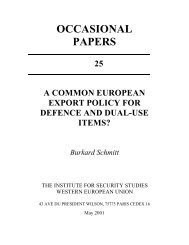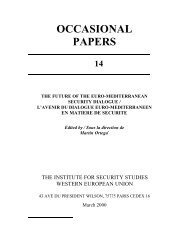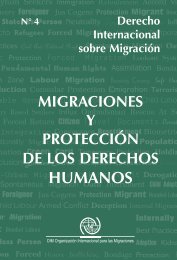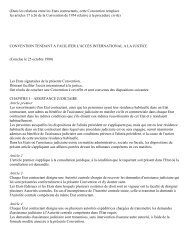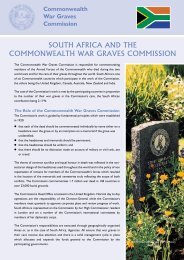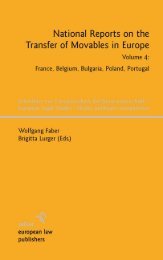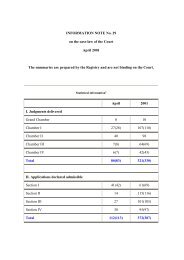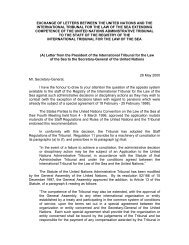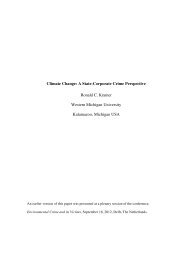Party Autonomy in International Property Law - Peace Palace Library
Party Autonomy in International Property Law - Peace Palace Library
Party Autonomy in International Property Law - Peace Palace Library
You also want an ePaper? Increase the reach of your titles
YUMPU automatically turns print PDFs into web optimized ePapers that Google loves.
A. General Aspects of <strong>Party</strong> <strong>Autonomy</strong><br />
the fundamental debate on whether the numerus clausus is limited to<br />
the traditional property rights, be<strong>in</strong>g ownership and the limited property<br />
rights, i.e. (i) servitude (erfdienstbaarheid), (ii) usufruct (vruchtgebruik),<br />
(iii) emphyteusis (erfpacht), (iv) superficies (opstalrecht), (v) mortgage (hypotheekrecht)<br />
and (vi) pledge (pandrecht), or whether the numerus clausus<br />
also encompasses ‘modern’ types of property rights such as rights to goodwill<br />
and <strong>in</strong>ternet doma<strong>in</strong> names.<br />
3.3. Orig<strong>in</strong> of the numerus clausus<br />
It is generally assumed that the numerus clausus is a German <strong>in</strong>vention<br />
that was developed by the Pandectists <strong>in</strong> the 19 th century and <strong>in</strong>corporated<br />
<strong>in</strong> the 1900 draft of the BGB as one of its fundamental pr<strong>in</strong>ciples.<br />
Without any doubt, the restrictions on party autonomy <strong>in</strong> the law of<br />
property formed an essential part of the model for private law that was<br />
developed by Friedrich Carl von Savigny (1779-1861) and his followers. 17<br />
Other elements of this model were a new abstract, absolute and total concept<br />
of ownership, the notion of a th<strong>in</strong>g that excludes <strong>in</strong>tangible assets,<br />
a strict specificity requirement for property rights, a rejection of transfer<br />
restrictions with proprietary effect, the autarky of the law of property visà-vis<br />
the law of obligations and general protection for bona fide acquirers<br />
aga<strong>in</strong>st a defect <strong>in</strong> the transferor’s title. As it is now understood by most<br />
scholars, the numerus clausus is deeply rooted <strong>in</strong> 19 th century German<br />
legal th<strong>in</strong>k<strong>in</strong>g.<br />
However, an <strong>in</strong>vestigation of the Dutch sources shows that the numerus<br />
clausus of property rights was <strong>in</strong>corporated <strong>in</strong> very clear words <strong>in</strong> early<br />
drafts for a new Dutch civil code around 1800, most articulately <strong>in</strong> an<br />
1816 draft by Joan Melchior Kemper (1776-1824). Kemper’s draft stated<br />
explicitly that the only rights one could have <strong>in</strong> the property of another<br />
17<br />
See Wolfgang Wiegand, Numerus clausus der d<strong>in</strong>gliche Rechte – Zur Entstehung<br />
und Bedeutung e<strong>in</strong>es zentralen zivilrechtlichen Dogmas, <strong>in</strong>: Wege europäischer<br />
Rechtsgeschichte (Festschrift Karl Kroeschell), Rechtshistorische<br />
Reihe Band 60, 1987, p. 623-643; see also Wiegand, Die Entwicklung des<br />
Sachenrechts im Verhältnis zum Schuldrecht, AcP 190 (1990), p. 112-138,<br />
and Wiegand, Funktion und systematische Stellung des Sachenrechts im BGB,<br />
<strong>in</strong>: 100 Jahre BGB – 100 Jahre Staud<strong>in</strong>ger, Beiträge zum Symposion vom 18.-<br />
20. Juni 1998 <strong>in</strong> München, p. 107-126. See also Füller, o.c. 2006.<br />
64<br />
T.H.D. Struycken<br />
© sellier. european law publishers<br />
www.sellier.de



